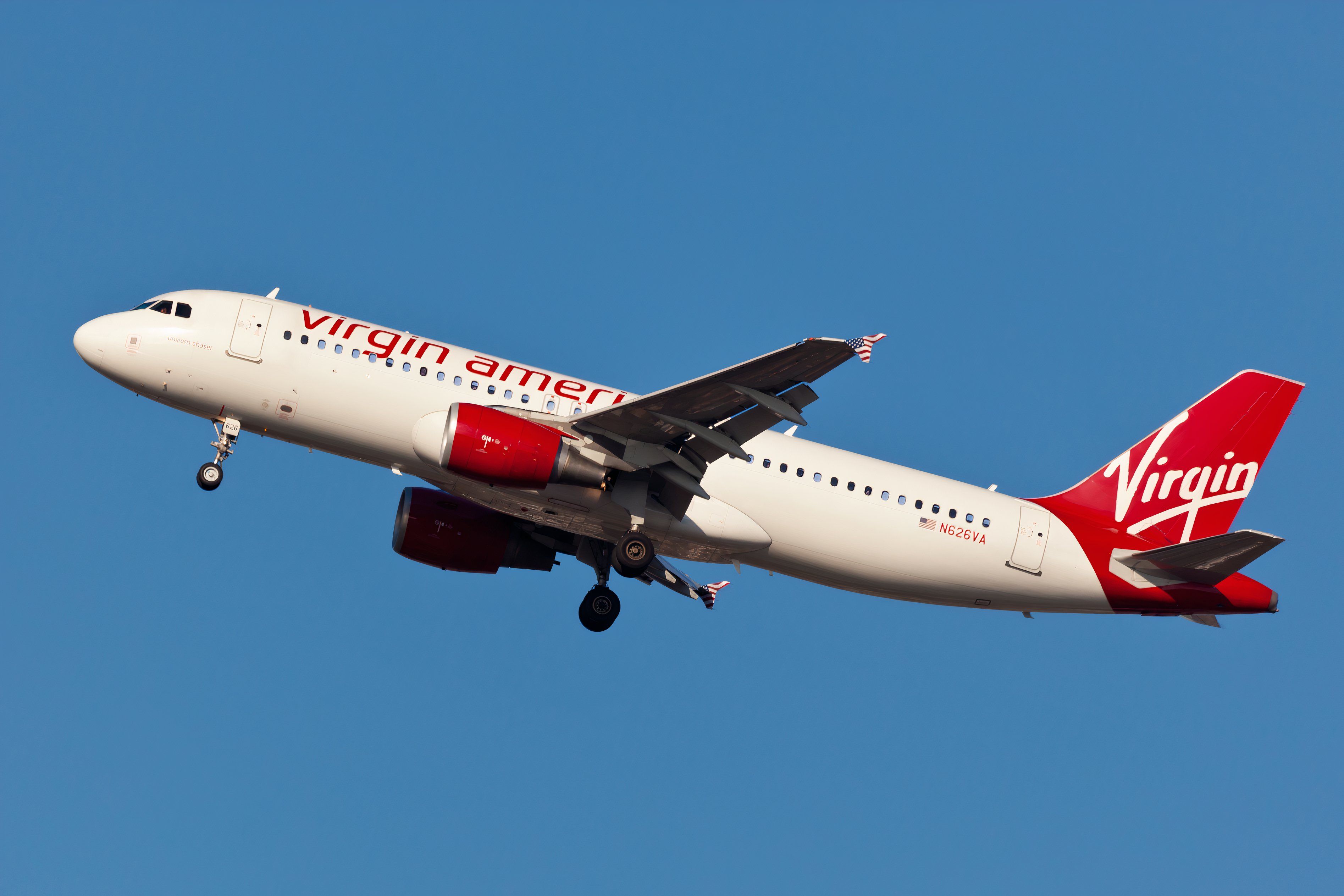
More than one reason for a merger to take place
Nonetheless, numerous factors may drive an airline’s management team to consider a sale to another carrier. Therefore, there are many reasons why an airline may choose to merge with another, which go far beyond the typical mergers that involve one airline struggling. One specific merger from the mid-2010s serves as a key example of such an acquisition.

Photo: Eliyahu Yosef Parypa | Shutterstock
Virgin America was thriving when it was eventually purchased
The Virgin Group, which was founded by Richard Branson and maintained investments in companies across the travel and entertainment spaces, launched Virgin America in 2004, a new airline that was set to make a name for itself in the US domestic travel market. Growing over a decade, the airline in 2014 had grown to operate nearly 70 aircraft and did so with service to more than 30 destinations across North America.

Photo: Airbus
Virgin America was performing well and had significant strategic strongholds in two major West Coast hubs. These facilities were being targeted by multiple carriers for cross-country expansion, and are as follows:
San Francisco International Airport (SFO) Los Angeles International Airport (LAX)
By 2014, the airline’s success had become so extensive that it decided to release an Initial Public Offering (IPO) onto the NASDAQ stock exchange, making the carrier a public company for the first time. The carrier’s first offering of 13.3 million shares raised over $300 million, and the shares skyrocketed during their first day of trading, according to BBC News.

Photo:Â Philip Pilosian | Shutterstock
The airline was thriving financially, with vast reserves of investment capital following its IPO. The carrier was prepared for further expansion and transition. Nonetheless, just two years later in 2016, the airline announced its sale to the Alaska Air Group, something which would become the most important merger of the five years leading up to the COVID-19 pandemic. This thus begs the question: Why did the Virgin Group sell Virgin America if the airline was doing so well?
 Related Over 70 Hawaiian Airlines Non-Contract Employees Will Be Separated Following Alaska Airlines Merger
Related Over 70 Hawaiian Airlines Non-Contract Employees Will Be Separated Following Alaska Airlines Merger
The airline said the decision was made after several weeks of dialogue with the employees.
The airline proved to be far more valuable than the Virgin Group had expected it to be
Private interest in the acquisition of Virgin America began to appear in the back half of 2015, as the successful carrier’s assets, strategic position, network, and loyal customer base proved exceedingly valuable. As a result, many airlines began to look into the possibility of acquiring the airline, with JetBlue and Alaska emerging as two key contenders.
By the beginning of 2016, Alaska had put a bid of $44.75 per share on the table, creating a bidding war that would go on for months. JetBlue later countered with a price of $57 per share before Alaska announced publicly that it would be acquiring the organization for $2.6 billion, a deal that had a total valuation of over $4 billion when one factors in the associated debt and leases that Alaska accounted for.
Despite dissents from Virgin America’s founder, Richard Branson, the company’s shareholders approved the deal in July 2017, and the Department of Justice approved the merger shortly after. Over the next two years, the company would slowly become fully integrated into the Alaska Airlines brand.
So why exactly did Virgin decide to sell?
Virgin America had found a way to become far more valuable than it had expected itself to become. Its cross-country routes out of Los Angeles and San Francisco were some of the most valuable in the country, and other carriers were champing at the bit to get bigger pieces of these critical markets.
 Related How Virgin America Was Ahead Of Its Time
Related How Virgin America Was Ahead Of Its Time
The airline possessed many landing slots at two of the country’s most important airports, and a loyal customer base that had been mostly satisfied with the company’s offering. In the ten years between 2005 and 2015, a handful of mergers changed the US aviation industry to be dominated by just a few carriers, leaving smaller airlines fighting for survival.

Photo:Â Wenjie Zheng | Shutterstock
For Alaska and JetBlue, expanding their presence on cross-country routes was seen more as a matter of survival than voluntary acquisition. As a result, both airlines were willing to pay a premium to acquire the successful airline, to expand their market capacity. For Virgin America, the money was simply too good to pass up.
Source link : http://www.bing.com/news/apiclick.aspx?ref=FexRss&aid=&tid=6721688f0ea54b0b8df0b3062adff0a1&url=https%3A%2F%2Fsimpleflying.com%2Fvirgin-america-sale-merger-case-study-history%2F&c=14362319463925719993&mkt=en-us
Author :
Publish date : 2024-10-29 11:33:00
Copyright for syndicated content belongs to the linked Source.












